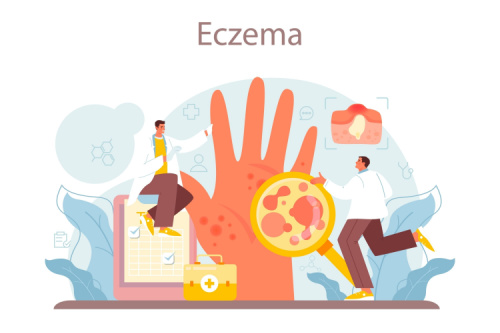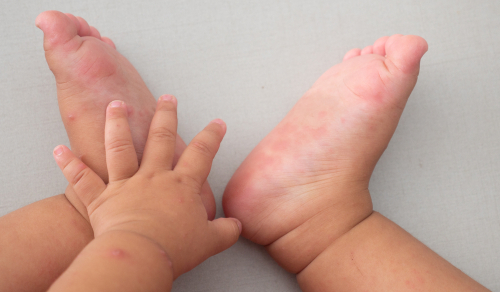WORDS PROFESSOR DR MUHAMMAD YAZID JALALUDIN
 FEATURED EXPERT FEATURED EXPERTPROFESSOR DR MUHAMMAD YAZID JALALUDIN Senior Consultant Paediatrician and Paediatric Endocrinologist UM Specialist Centre |
Most babies seem small when they first come into the world, but for some, they truly are smaller when compared to their fellow babies-in-arms.
This condition is known medically as small for gestational age (SGA for short).
Gestational age, by the way, is the length of time a baby spends growing in their mother’s womb.
Small for gestational age babies that weigh below 2,500 g at birth are additionally considered to have low birth weight.
SMALL FOR GESTATIONAL AGE CAN BE MEASURED AND DETECTED AFTER A BABY IS BORN
After a mother has given birth in a hospital or clinic, nurses will clean the newborn and giving them a quick check for any abnormalities. The nurses will also measure the length and head circumference of the baby as well as weigh.
These measurements inform healthcare professionals whether or not a baby is small for their gestational age.
POSSIBLE CAUSES OF SMALL FOR GESTATIONAL AGEPregnant women should go for their antenatal check-ups to monitor for and manage any problems that might result in a small for gestational age baby |
The mother’s health during pregnancy
The mother’s ageThe risk of having a small for gestational age baby is significantly higher for women aged 30 and above that have never given birth before, as well as all women aged 40 and above, compared to women in their 20s. The mother’s heightWomen that are short are at risk because their smaller wombs and shorter birth canals influence the growth of their foetus. Family historyInterestingly, research has shown that the risk of having a small for gestational age baby can be influenced as far back as two generations. If the pregnant woman and/or her own mother were small for gestational age babies, the foetus has a higher chance of being born small for gestational age. Issues with the placenta during pregnancy
Chromosomal or genetic abnormalitiesThese abnormalities include those that give rise to Down syndrome and congenital abnormalities such as structural defects of the heart, kidneys, lungs, or intestines. Other possible causesCatching an infection while in the womb or being part of a multiple pregnancy (twins, triplets, etc) can also negatively affect a foetus’s growth. |
SMALL FOR GESTATIONAL AGE COMPLICATIONS AFTER DELIVERY
- As they have only small amounts of fat or energy stored away, they may have a low body temperature at birth. This can result in hypothermia, where the body loses heat faster than it can produce it. If this condition is prolonged, the baby can die as their heart and brain cannot function well at these sub-optimal temperatures.
- The lack of fat and glycogen stored in a small for gestational age baby’s liver can cause hypoglycaemia, where they have low blood sugar levels that are unable to match their body’s needs. This can cause the baby to have seizures and/or brain damage. If the hypoglycaemia is prolonged, the baby may die or develop long-term neurodevelopmental deficits, including cerebral palsy.
- As they are deprived of sufficient nutrients in the womb, small for gestational age babies become ‘programmed’ to hoard whatever nutrients and calories they receive. This means that after birth, they can very easily put on weight if their caloric intake is not carefully monitored. Thus, these babies are prone to obesity and its associated conditions (diabetes, high blood pressure, high cholesterol, osteoarthritis, heart disease, etc). This “programming” lasts throughout their lifetime.
- Their growth rate can influence when they achieve puberty. Small for gestational age babies that catch up in their growth very quickly might experience early puberty. On the other hand, if they are slow in growing, their puberty might be delayed.
- Persistent short stature.
SMALL FOR GESTATIONAL AGE, FORTUNATELY, CAN BE MANAGED
Generally speaking, small for gestational age babies should be able to catch up in their growth within the first six months to two years of their life with good nutrition.
In fact, 85% of these babies achieve normal height and weight for their age and gender by two years of age.
Some children require a longer time and there is still some leeway until the age of five to allow them to catch up in growth to their peers.
However, by five years of age, 8-10% of small for gestational age babies would still be smaller than normal, and this is the time that parents and doctors need to start discussing treatments for the child.
Growth hormone therapy
- The main treatment for small for gestational age babies that do not manage to catch up in growth by the time they are four to five years old
- Will enable them to achieve their optimal final height as adults, through improving muscle and bone growth
- Helps increase the breakdown of fats, to address the tendency of small for gestational age babies to accumulate fat and become obese
Good nutrition
- Nutrition plays a critical role in the first two years of life in promoting a child’s growth
- Their diet must be carefully monitored as they are prone to becoming overweight; on the other hand, when they are not fed enough, they might become stunted
- Parents need to do a careful balancing act when it comes to feeding their small for gestational age baby
Regular physical activity
- As the child grows, parents also need to encourage and allow their child to be active
- Doing so will prevent excessive weight gain and help stimulate the natural production of serotonin and growth hormone to help the child grow
- Such physical activity must be vigorous enough that the child’s heartbeat increases and they sweat.
Proper sleep
- It is critical that children are asleep at the latest by 9 pm, as the peak time for the body to produce its natural growth hormones is between 10 pm to 12 am.
- Sleeping later, as many Malaysian children tend to do, will cause them to miss this critical period of growth hormone secretion.







